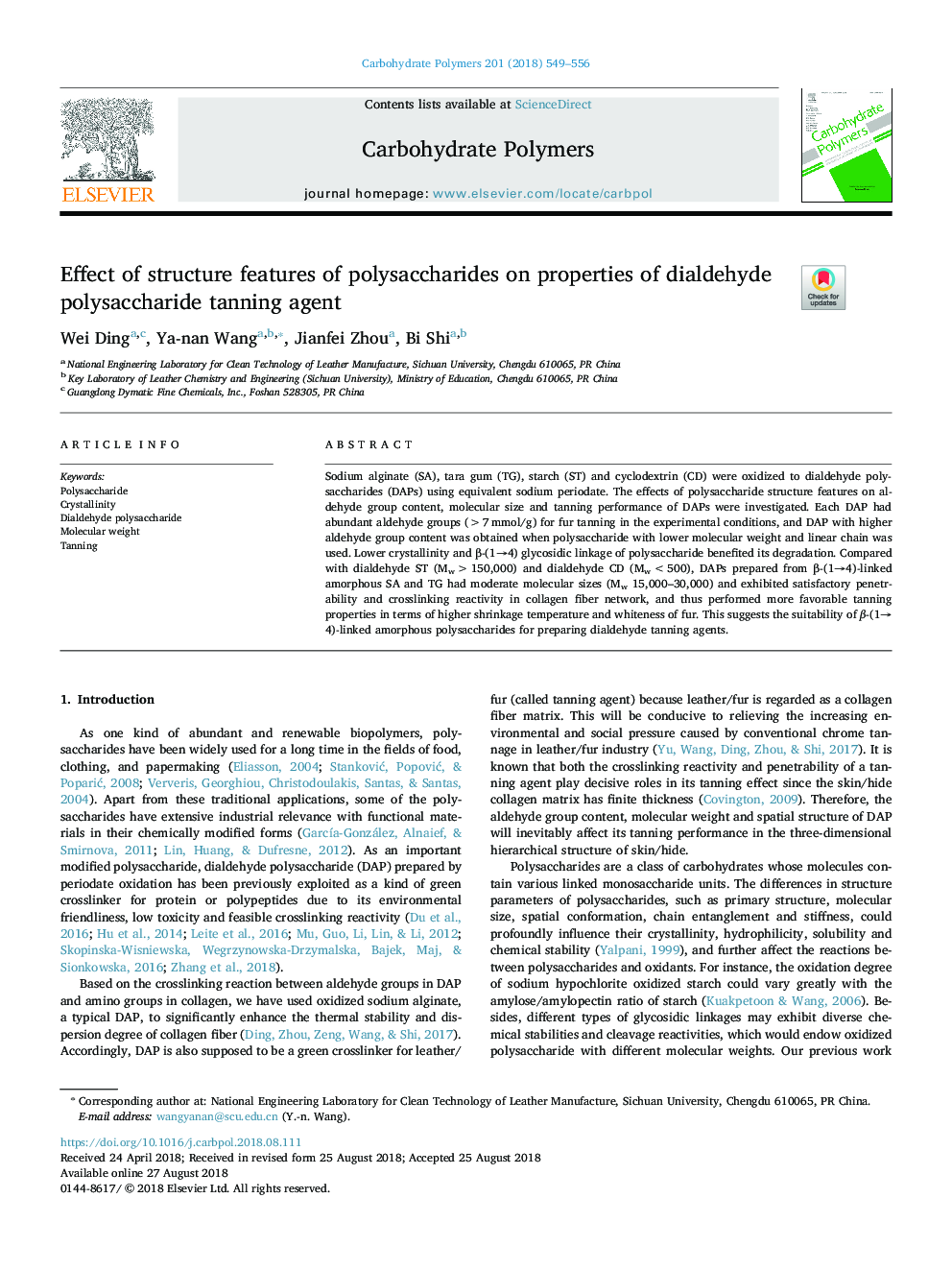| Article ID | Journal | Published Year | Pages | File Type |
|---|---|---|---|---|
| 10128074 | Carbohydrate Polymers | 2018 | 8 Pages |
Abstract
Sodium alginate (SA), tara gum (TG), starch (ST) and cyclodextrin (CD) were oxidized to dialdehyde polysaccharides (DAPs) using equivalent sodium periodate. The effects of polysaccharide structure features on aldehyde group content, molecular size and tanning performance of DAPs were investigated. Each DAP had abundant aldehyde groups (>7âmmol/g) for fur tanning in the experimental conditions, and DAP with higher aldehyde group content was obtained when polysaccharide with lower molecular weight and linear chain was used. Lower crystallinity and β-(1â4) glycosidic linkage of polysaccharide benefited its degradation. Compared with dialdehyde ST (Mw>150,000) and dialdehyde CD (Mw<500), DAPs prepared from β-(1â4)-linked amorphous SA and TG had moderate molecular sizes (Mw 15,000-30,000) and exhibited satisfactory penetrability and crosslinking reactivity in collagen fiber network, and thus performed more favorable tanning properties in terms of higher shrinkage temperature and whiteness of fur. This suggests the suitability of β-(1â4)-linked amorphous polysaccharides for preparing dialdehyde tanning agents.
Related Topics
Physical Sciences and Engineering
Chemistry
Organic Chemistry
Authors
Wei Ding, Ya-nan Wang, Jianfei Zhou, Bi Shi,
